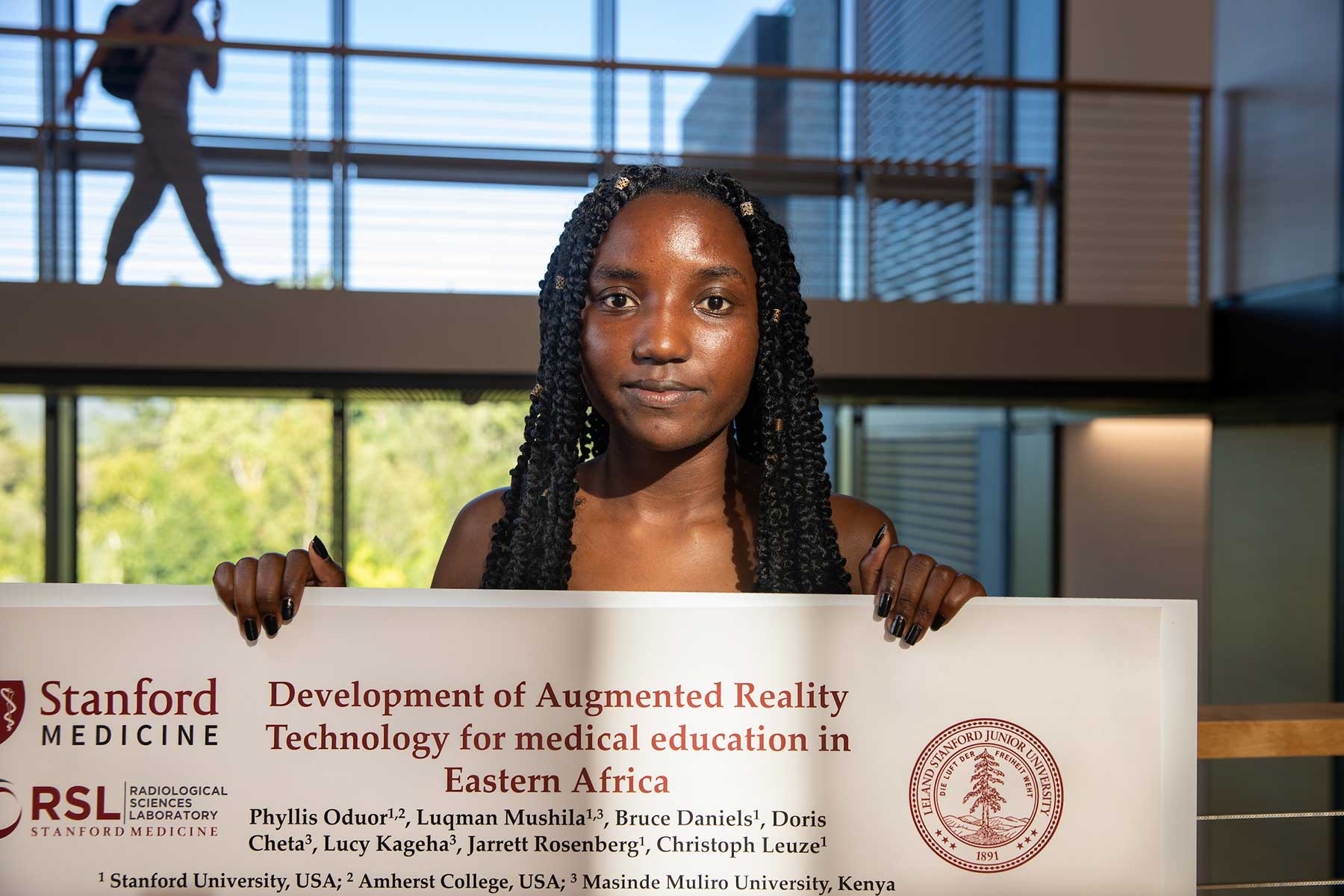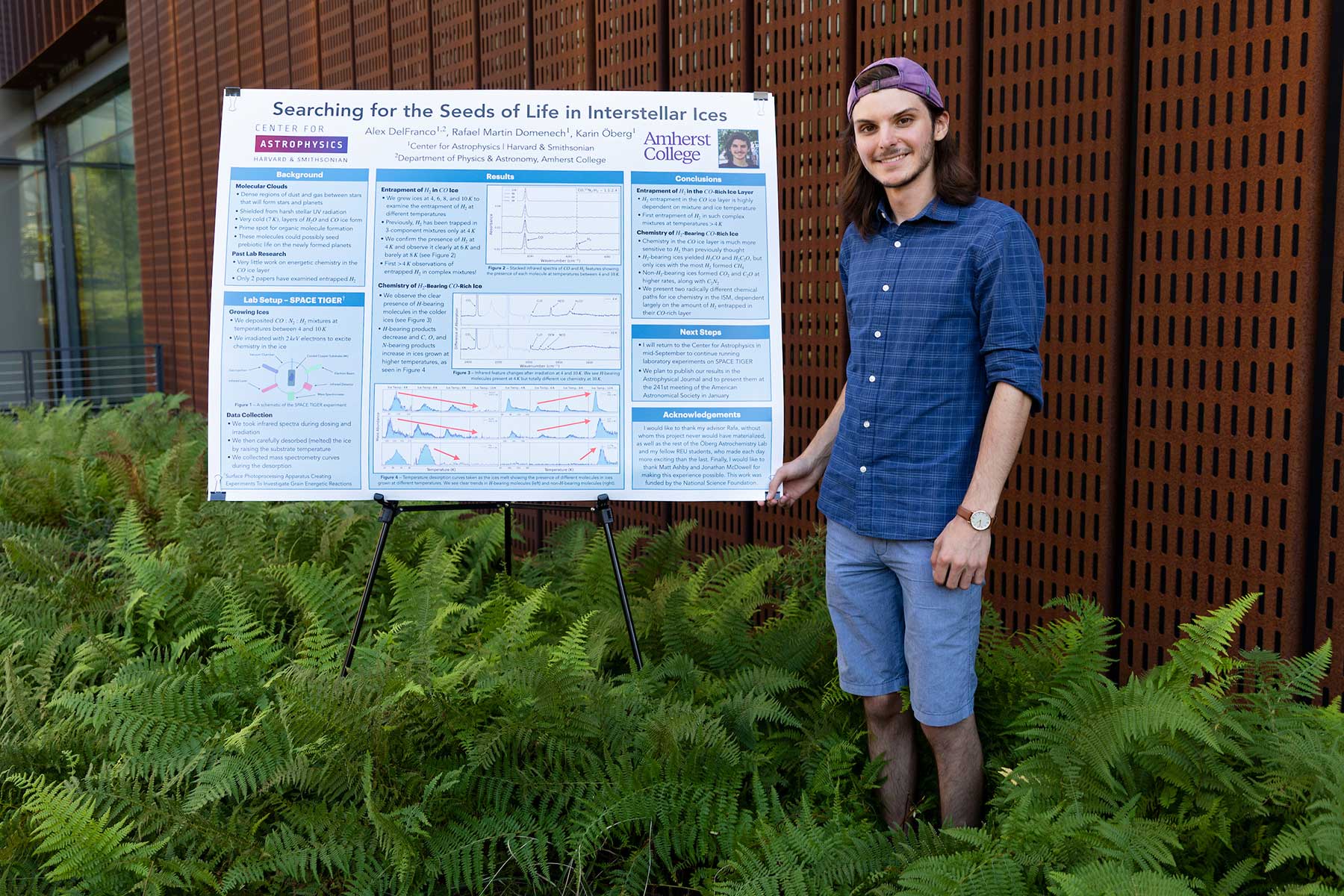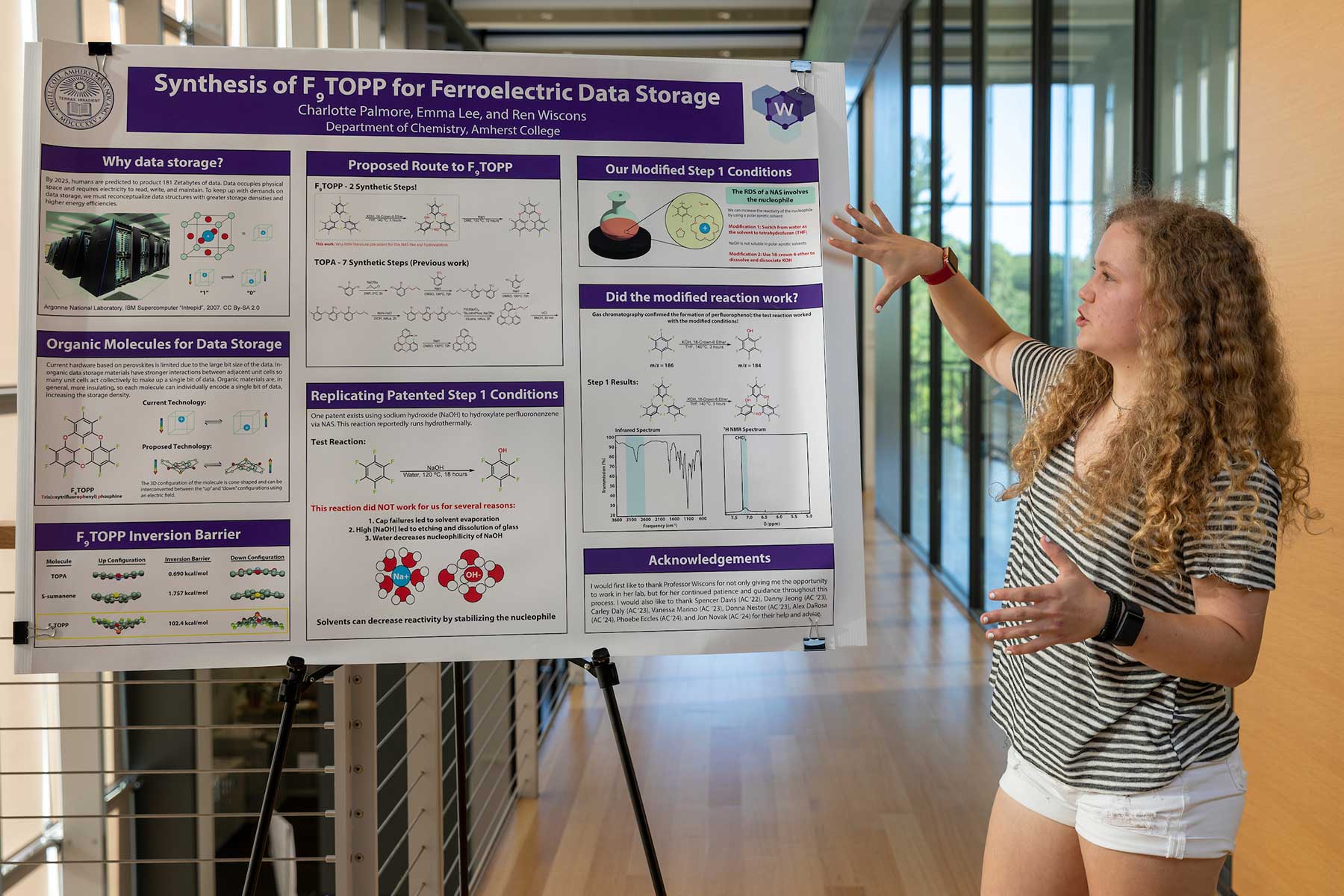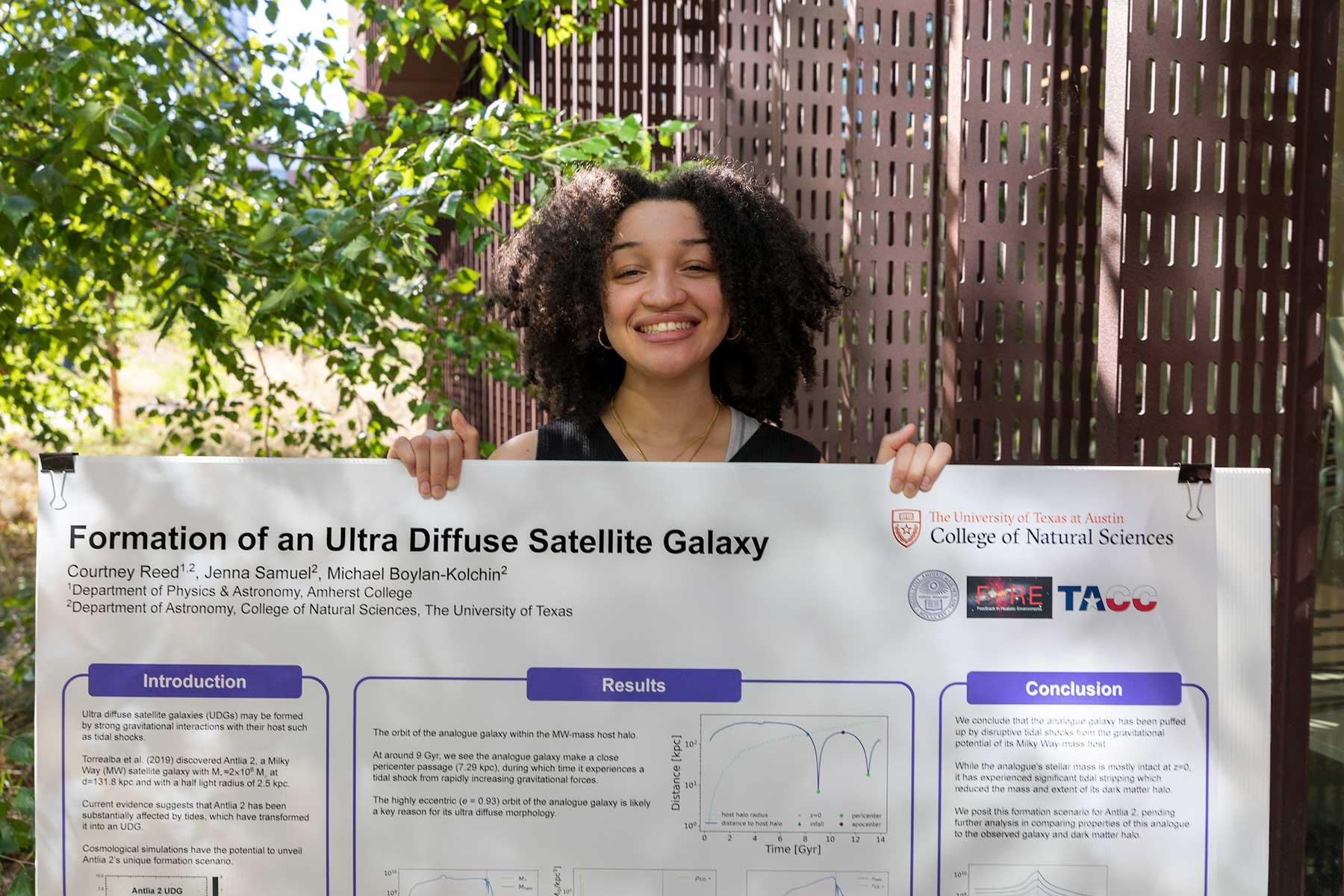
You surf the waves, you surf the internet and, on Sept. 2, you could SURF the Science Center. The acronym stands for Summer Science Undergraduate Research Fellowships, and that day the building was filled with students describing, yes, what they did last summer. On several floors, you could wander about and peer at posters summing up their intriguing research on everything from galaxies to empathy to molecular bonds to fidgety fish. Here are a handful of students talking about what they learned. Surf away…
“Blue Carbon in the Florida Mangroves”

Pictured: Ethan Ruderman ’25
“Working on campus, over the summer, something that would involve plants.” That’s what Ethan Ruderman ’25, an environmental studies major, asked for when he spoke to Professor of Geology and Environmental Studies Anna Martini last spring. She said yes to plants, but pointed him off campus. Well off: some 1,500 miles to Florida’s Biscayne Bay, where he joined a study that focused on “blue carbon,” that is, the carbon captured by marine ecosystems. He worked in the lab and plunged right in the water, too, pulling core samples from mangroves. Mangrove communities have declined by 20 percent to 35 percent since 1980, though restoration efforts are helping build them back up. “We wanted to quantify the differences between restored and natural mangrove communities,” explains Ruderman. They used the “loss-on-ignition” method, in which you measure the before-and-after-burning weights of dried samples of mangrove sediment, to compare the levels of carbon that remain. The takeaway? Nothing to feel blue about: the restored communities retained as much as the original ones.
“Beyond the Blue Line: Officers’ Empathy and Moral Courage Predict Willingness to Intervene, Burnout and Psychological Well-Being.”
Image


Pictured: Annika Paylor ’24, Susana Feldman ’23, Nicole Barbaro ’24, Glory Okoli ’24
ABLE is a national advocacy group—it stands for Active Bystandership for Law Enforcement—that offers scenario-based training for police officers about how they might intervene when their peers are acting in questionable ways on the job. The organization is mentioned in the book Why We Act: Turning Bystanders into Moral Rebels, by psychology professor Catherine Sanderson, and through ABLE, her students had Zoom conversations with 31 police officers, during which they discussed empathy, burnout and accessing moral courage. Susana Feldman ’23 recalls: “We asked them questions like ‘Do you ever see instances in which you need to stand up or intervene? What’s stopping you from intervening? Are there consequences? Are you afraid of losing your job?”
“Development of Augmented Reality Technology for Medical Education in Eastern Africa”

Pictured: Phyllis Oduor ’23
“I’m very passionate about topics like public health and especially how resources are distributed—because I’m from Kenya and I see the disparity in healthcare there,” says Phyllis Oduor ’23. Under the auspices of the Stanford University School of Medicine, she remotely interviewed health care practitioners at Kenya’s Masinde Muliro University and learned that one of their top concerns is the dearth of doctors who can train others. Enter augmented reality. “It’s a new technology that has been used a lot in entertainment, but also surgery, and I wanted to see how it might be applied in medical education,” says Oduor. AR uses the same technology as smartphones, and smartphone usage is growing in Africa, so there was a pragmatic rationale at work here, too. The study compared two groups of paramedics, one that was taught in-person, and another that was taught using augmented reality by an instructor at Stanford. It turned out that the AR-coached group retained the information better than the traditional group, perhaps because the AR headsets cut down on external distractions. The hope, as Oduor put it, “is that students can be trained regardless of their geography.”
“Searching for the Seeds of Life in Interstellar Ices”

Pictured: Alex DelFranco ’24
“Astrochemistry is a brand new field,” says Alex DelFranco ’24. “And it has made huge discoveries in understanding everything from different chemical pathways in space to what kind of molecules can exist in space that could eventually seed life on other planets.” The field pretty much explores these chemical pathways two ways: by observing galactic activity through a telescope and by recreating, here on Earth, the conditions of space. DelFranco did the latter this summer, working with a huge vacuum chamber equipped with lasers and gas tubes at Harvard’s Smithsonian Astrophysical Observatory. “You have to know what kind of molecules are present on the surfaces of those planets, the ones that could eventually combine to form the amino acids and proteins of life,” he says. Hydrogen, in particular, has been difficult to find, since it has previously been thought to bounce off ice formations in space. But DelFranco and the researchers were able to trap hydrogen at realistic outer space-equivalent cold temperatures, and also begin to show how hydrogen affects the type of molecules in these pre-planet-formation clouds.




